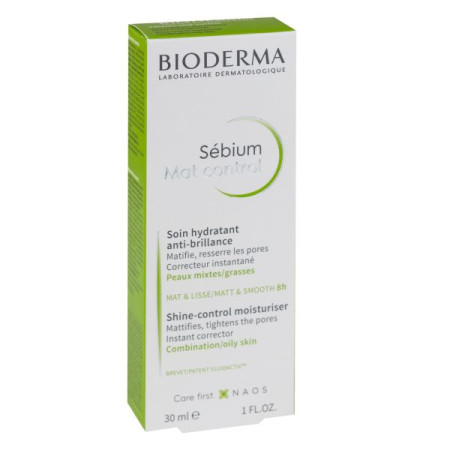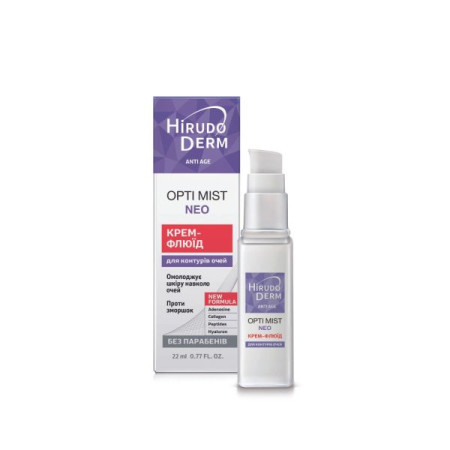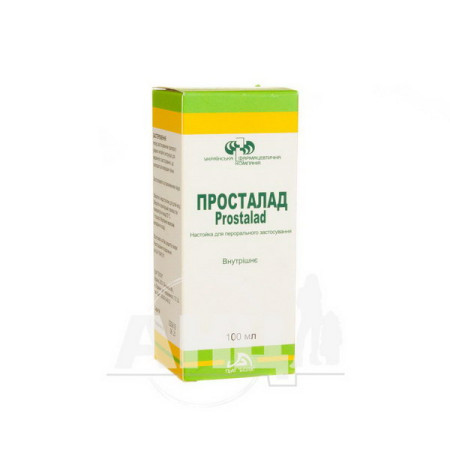Alphagan P eye drops 1.5 mg/ml dropper bottle 5 ml

Pharmacological properties
Pharmacodynamics. Brimonidine is a relative selective α2-adrenoceptor agonist (a topical drug used to reduce elevated intraocular pressure (IOP). When used in the form of 1.5 mg/ml eye drops, the maximum IOP-lowering effect is achieved after 2 hours. The hypotensive effect of brimonidine is provided by reducing the formation and increasing the outflow of intraocular fluid along the uveoscleral tract.
Pharmacokinetics. When instilling eye drops, C max is reached after 0.5-2.5 hours, T ½ is about 2 hours.
The binding of brimonidine to plasma proteins has not been studied. The drug is metabolized primarily in the liver. Brimonidine and its metabolites are excreted by the kidneys.
Indication
Reduction of elevated IOP in patients with open-angle glaucoma or elevated intraocular pressure (both as monotherapy and in combination with other IOP-lowering drugs).
Application
Apply topically. Instill 1 drop into the conjunctival sac of the affected eye 3 times a day with an interval of 8 hours between administrations.
Alphagan P can be used with other ophthalmic drugs to lower IOP. If the patient is simultaneously using other eye drops, an interval of at least 5 minutes should be observed between instillations.
Children. The efficacy and safety of Alphagan P in children under 2 years of age and children with low body weight (up to 20 kg) have not been proven.
Contraindication
Hypersensitivity to brimonidine tartrate or other components of the drug.
Use of MAO inhibitors and antidepressants that affect noradrenergic transmission (e.g. tricyclic antidepressants and mianserin).
Pregnancy and breastfeeding.
Children under 2 years of age, low body weight (up to 20 kg), since the safety and efficacy of the drug in these groups of patients have not been studied.
Side effects
Adverse reactions that occurred in patients receiving brimonidine ophthalmic solution (0.1-0.2%) are listed according to the MedDRA classification and are distributed by organ system as follows: very common (≥1/10); common (≥1/100 to 1/10); uncommon (≥1/1000 to 1/100); rare (≥1/10,000 to 1/1000); very rare (<1/10,000).
Within each group, adverse reactions are presented in order of decreasing seriousness.
Clinical Trial Experience: Because clinical trials are conducted under varying conditions, adverse reaction rates observed in clinical trials of a drug cannot be directly compared to those of another drug and may not reflect those observed in real-world use of the drug.
Infectious and parasitic diseases: often - infections (mainly colds and respiratory), rhinitis, infectious sinusitis, sinusitis, pharyngitis, bronchitis, flu syndrome.
Disorders of the circulatory and lymphatic systems: often - hypercholesterolemia.
Disorders of the organ of vision: very often - allergic conjunctivitis, conjunctival hyperemia, eye itching; often - burning, conjunctival folliculosis, allergic eye reactions, visual impairment, blepharitis, blepharoconjunctivitis, blurred vision, cataract, conjunctival edema, conjunctival hemorrhage, conjunctivitis, tearing, eye discharge, dry eyes, eye irritation, eye pain, eyelid edema, eyelid erythema, follicular conjunctivitis, foreign body sensation, keratitis, eyelid disease, photophobia, acute pain, superficial patchy keratopathy, tearing, visual field loss, vitreous detachment, vitreous lesion, floating opacities in the vitreous, decreased visual acuity, corneal staining, conjunctival discoloration; infrequently - corneal erosion, stye.
Vascular disorders: often - arterial hypotension, hypertension.
Respiratory, thoracic and mediastinal disorders: common: cough, shortness of breath; uncommon: dryness of the nasal mucosa.
Digestive system disorders: often - dyspepsia, indigestion, taste disturbance, dry mouth.
General disorders and administration site conditions: often - asthenia, fatigue.
Immune system disorders: often - allergic reactions.
Nervous system disorders: often - dizziness, headache, drowsiness; infrequently - taste disturbance.
Psychiatric disorders: often - insomnia.
Skin and subcutaneous tissue disorders: common: rash.
Post-marketing Experience: The following adverse reactions have been reported during post-marketing use of brimonidine tartrate ophthalmic solution. Because these reactions were reported in an unknown number of patients, their frequency cannot be estimated at this time. The adverse reactions listed below were selected because of their seriousness, frequency of reporting, possible relationship to brimonidine tartrate ophthalmic solution, or a combination of these factors.
Cardiovascular system disorders: unknown - arrhythmias (including bradycardia and tachycardia).
Psychiatric disorders: unknown - depression.
Immune system disorders: unknown - hypersensitivity, skin reactions (including erythema, eyelid pruritus, skin rash, vasodilation).
Visual disorders: unknown - iritis, keratoconjunctivitis sicca, miosis, iridocyclitis (anterior uveitis).
Nervous system disorders: unknown - syncope, coma.
The following adverse reactions have been reported in children receiving brimonidine tartrate ophthalmic solution.
Respiratory, thoracic and mediastinal disorders: not known - apnea.
Cardiovascular system disorders: unknown - bradycardia.
Vascular disorders: not known - arterial hypotension.
Nervous system disorders: not known - hypotension, lethargy, drowsiness.
General disorders and administration site conditions: not known - pale skin, hypothermia.
Respiratory, thoracic and mediastinal disorders: not known - respiratory failure.
Special instructions
The drug should be prescribed with caution to patients with depression, cerebral and coronary insufficiency, Raynaud's syndrome, orthostatic hypotension and thromboangiitis obliterans.
Although brimonidine tartrate ophthalmic solution demonstrated a negligible effect on patients' blood pressure during clinical studies, the drug should be used with caution in patients with severe, unstable, and uncontrolled forms of cardiovascular disease.
Cases of bacterial keratitis have been reported with the use of multidose containers for topical ophthalmic products. This occurred because patients in most cases had underlying corneal disease or compromised ocular surface integrity and inadvertently contaminated the containers when using them.
If eye drops are used incorrectly or the tip of the dropper bottle comes into contact with the eye or surrounding surfaces, the eye drops may become contaminated with common bacteria that can cause eye infections. Serious eye damage and subsequent vision loss can result from using contaminated eye drops.
Immediately after use, the dropper bottle should be closed with a cap. If the drops change color or become cloudy, their use should be discontinued.
It is necessary to strictly monitor the condition of patients with the above-mentioned conditions; if the patient's condition worsens, the drug should be discontinued.
In the event of eye surgery or the development of an intercurrent condition (e.g. trauma or infection), you should immediately consult a doctor regarding the possibility of further use of the reusable dropper bottle.
Alphagan P has not been studied in patients with hepatic or renal insufficiency, therefore the drug should be used with caution in such patients.
The effect of dialysis on the pharmacokinetics of brimonidine in patients with renal insufficiency is unknown.
Patients who wear soft contact lenses should remove them before instillation of Alphagan P. Contact lenses can be reinserted after 15 minutes.
Allergic ocular reactions have been reported in some patients receiving brimonidine tartrate 0.2%. If allergic reactions occur, the drug should be discontinued.
Use during pregnancy or breastfeeding. Controlled studies in pregnant women have not been conducted. During pregnancy and breastfeeding, the drug should be used only if the expected benefit to the mother significantly outweighs the potential risk to the fetus or child. If necessary, use of the drug should be discontinued.
Ability to influence the reaction speed when driving vehicles or other mechanisms. The use of the drug may be accompanied by visual impairment, so the patient should refrain from driving vehicles and other mechanisms until visual acuity is restored. Taking the drug may be accompanied by episodes of weakness and / or drowsiness in some patients. If the patient's work is associated with potentially dangerous activities, he must be warned in advance about a possible decrease in attention and speed of psychomotor reactions, it is recommended to refrain from performing this type of activity.
Interactions
When using more than one topical ophthalmic agent, the drugs are applied at intervals of 5 minutes.
Despite the lack of specific drug interaction studies, the possibility of enhancing the effect of drugs that depress the central nervous system (alcohol, barbiturates, opium derivatives, sedatives, general anesthetics) should be taken into account. Since Alphagan P can lower blood pressure, hypotensive drugs and cardiac glycosides should be prescribed with caution.
Due to the known reduction in the hypotensive effect of clonidine (alpha-adrenomimetic) when used simultaneously with tricyclic antidepressants, the possibility of a decrease in the effectiveness of the drug Alphagan P during concomitant treatment with tricyclic antidepressants cannot be ruled out.
Theoretically, MAO inhibitors may affect the metabolism of brimonidine and potentially lead to an increase in the incidence of systemic adverse reactions, such as hypotension.
The drug should be prescribed with caution to patients taking medications that may affect the metabolism of amines and their distribution in the vascular bed, for example, chlorpromazine, methylphenidate, reserpine.
Overdose
Systemic overdose from accidental ingestion (adults). Information on accidental ingestion of brimonidine in adults is very limited. The only adverse reaction reported to date has been hypotension. Hypotension has been reported to be associated with reactive hypertension.
Treatment of overdose includes supportive and symptomatic therapy, monitoring of airway patency.
There have been reports of overdose with other α2-agonists, causing symptoms such as hypotension, asthenia, vomiting, lethargy, sedation, bradycardia, arrhythmia, miosis, apnea, hypotension, hypothermia, respiratory failure and convulsions.
Overdose with topical application and systemic overdose with accidental ingestion (in children). Symptoms of brimonidine overdose, such as apnea, bradycardia, coma, hypotension, hypothermia, hypotension, lethargy, pale skin, respiratory failure, drowsiness, have been recorded in newborns, infants and children receiving brimonidine ophthalmic solution (0.1-0.2%) as part of the treatment of congenital glaucoma or in case of accidental ingestion of brimonidine.
Some of these symptoms required intensive care with intubation. All patients recovered fully within 6-24 hours.
Storage conditions
At a temperature not exceeding 25 °C, the shelf life of the drug after the first opening of the dropper bottle is 28 days.
There are no reviews for this product.
There are no reviews for this product, be the first to leave your review.
No questions about this product, be the first and ask your question.















